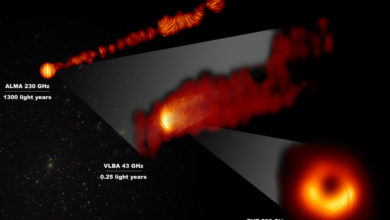Quickies
Skepchick Quickies 12.2
- Report questions need for calcium and vitamin D supplements – Cynically, I doubt this will quell the surge in popularity of vitamin D supplements.
- Three times as many stars in the universe as previously thought – Scientists in Hawaii have found that the universe contains a lot more red dwarfs than we thought.
- For those looking for a rationalist Christmas card
- Why people should learn statistics – From cerberus40.





Scientists in Hawaii have found that the universe contains a lot more red dwarfs than we thought.
More red dwarfs huh? So the universe is far funnier than previously believed.
3 times as many stars as previously thought? This is so cool. This is why I love science. New information leads to new knowledge. I am really happy right now.
wonder what this does for the calculations for dark matter and dark energy?seeing as i understand it they went looking for the dark stuff when the behaviors of the galaxies didn’t add up.now they find 3 times the mass in the universe.interesting.
…interesting thought, rbray14. Anyone with some astrophysics knowledge got somewhat to say?
@mrmisconception: And sadly has four times the smegheads it did before.
I’ve always figured that “dark matter” is probably/mostly “stuff we ain’t found yet.”
And: I want to send that card to everyone in my workplace…
@rbray14: Three times as many stars, not three times the mass. There are enormous stars, big stars, medium size stars, small stars and really tiny stars, and red dwarfs are on the tiny side, with correspondingly small mass.
@fenderplayer96:
“Three times as many stars, not three times the mass.
True, but the reason the concept of “dark matter” was introduced is because the calculated weight for the universe didn’t match the observable amount of matter (i.e. stars). So 3x more stars DOES equal a lot more mass. Making the 90% unaccounted for mass suddenly much less (perhaps down to 70% unaccounted for now).
From the first paragraph:
“new research shows that elliptical galaxies actually hold five to ten times as many stars as previously believed. This means that the total number of stars in the universe is likely three times bigger than realized.
[…]
They discovered that the red dwarfs, which are only between 10 and 30 percent as massive as the Sun, were much more bountiful than expected.”
In other words, there’s potentially 10x as many stars, even though the extra stars are possibly only 1/10th the mass of an average star. But that does increase the overall mass. As the article continues:
“In particular, galaxies might contain less dark matter – a mysterious substance only detectable due to its gravitational effects – than previous measurements of their masses indicated. Instead, the abundant red dwarfs might contribute more mass than previously calculated.”
Who knows what else will still be discovered to account for the extra mass …
But we can’t change our data it’s already written down in these books here.
Wait.
Sorry, I got religion and science mixed up for a second. Carry on then.
@Zapski
So that’s where the Tea Party is coming from.
It all makes sense now.
@exarch:
Of course it equals more mass, I didn’t say it didn’t – it’s just nowhere near three times as much.
Uh, no. Going from 10% accounted for to 30% accounted for takes 3x the previously known mass. This discovery doesn’t give you that, just 3x the number of stars.
What they said was, in a particular kind of galaxy, there are five to ten times as many stars as previously believed, and that means there could be three times as many stars in the entire universe. Where do you get that there’s potentially 10x as many? Sure, future findings could boost the number still higher, but we don’t know that.
Who knows, indeed. Maybe something, maybe nothing. We’ll just have to wait till they find it. All we know till then is there is missing (or at least not visible) mass, and dark matter’s one explanation for it.
@exarch: Even if they were all at the high end of the red dwarf mass range, it would only account for 10-20% of the 90% missing mass. This does very little to solve the missing dark matter problem.
Also, it’s not like astronomers didn’t think of this as a possible component of the missing mass from day 1. They are a type of MACHO. The Wiki article explains why they are insufficient to explain dark matter.
@Buzz Parsec:
“Even if they were all at the high end of the red dwarf mass range, it would only account for 10-20% of the 90% missing mass.”
Wait, isn’t that precisely what I said? 90 minus 20 still equals 70, right? Math didn’t change because somebody discovered loads of red dwarves …
@fenderplayer96:
“What they said was, in a particular kind of galaxy, there are five to ten times as many stars as previously believed, and that means there could be three times as many stars in the entire universe. Where do you get that there’s potentially 10x as many?”
You know what they call it when you rip someones comments out of context in order to make them look like they’re saying something completely different? Quote mining.
I’m just saying …
Anyway, yes, the article says there’s possibly up to 10 times as many stars in that type of galaxy (see, says right there: 10 times), adding a bunch of mass, and potentially increasing the actual number of stars in the universe by a factor of three (again, says so right there in my post and in the article). I got my information from the same source material you did.
I never stated the galaxy contained 10 times as many stars.
I never claimed it accounted for all of the dark matter.
I never even claimed it accounted for a three-fold increase of the known matter
I also very clearly stated “perhaps down to 70%”
Please read the words I wrote, not the ones you want to read.
@exarch: You also said:
My point is this doesn’t come close to solving the missing mass problem by any stretch. 70% missing (which is a lower bound) is still a lot to account for.
Furthermore, even the 10% figure is generous. The star mass distribution is such that most of these red dwarfs are at the lower end of the mass range (.1 solar mass stars are much more common than .2), so the 10% figure is much more likely than the 20% figure (as @fenderplayer96 pointed out.)
Second, it only applies to giant elliptical galaxies; we know it doesn’t apply to large spirals like the Milky Way, because we can observe local red dwarfs directly, and because we can count micro-lensing events.
Third, stars only account for about 1/2 the known (non-dark) matter in galaxies, the other half being the ISM. (I was looking for a reference for this, but couldn’t find one quickly, so 1/2 is a guess.) Doubling the total mass of stars would only raise the known matter percentage from 10% to 15%, still leaving 85% as dark matter.
The 20% I cited was a best case, not the most likely case, for chipping away at the missing mass problem.
For the record, I am not advocating against the idea of dark matter.
Actually, the mass of the universe is ~72% dark energy, 23% dark matter, and ~5% stuff (stars, ISM, ICP, birds, donuts, etc.).
Since this in no way affects DE, the ratio of stars, et. al., to DM is about 18 to 82.
So if the “invisible” red dwarfs added 20% to the total mass of baryonic stuff, that would change the ratio to 22 to 78.
But if it adds 60% to the total mass of baryonic stuff, that would change the ratio to 30 to 70.
Still small, but significant.
OTOH, one of the things we needed DM for was to explain the “arm” movements of spiral galaxies, and extra red dwarfs doesn’t help that a bit.
In the end, this will add to the normal matter count, reduce the DM count, and not do anything to the DE.
@exarch: Good, I thought from your initial comment that either you were arguing otherwise, or that other people reading these comments might come to the conclusion that either dark matter doesn’t exist or that a large part of the reason it’s needed has been removed. (Actually, it’s only a small correction to the problem.)
My criticism of your comment was not personal, just an attempt to nip yet another “Scientists used to think X, now they think not X, so science is clearly unreliable” meme in the bud. Your post was just a convenient place to hang it on.